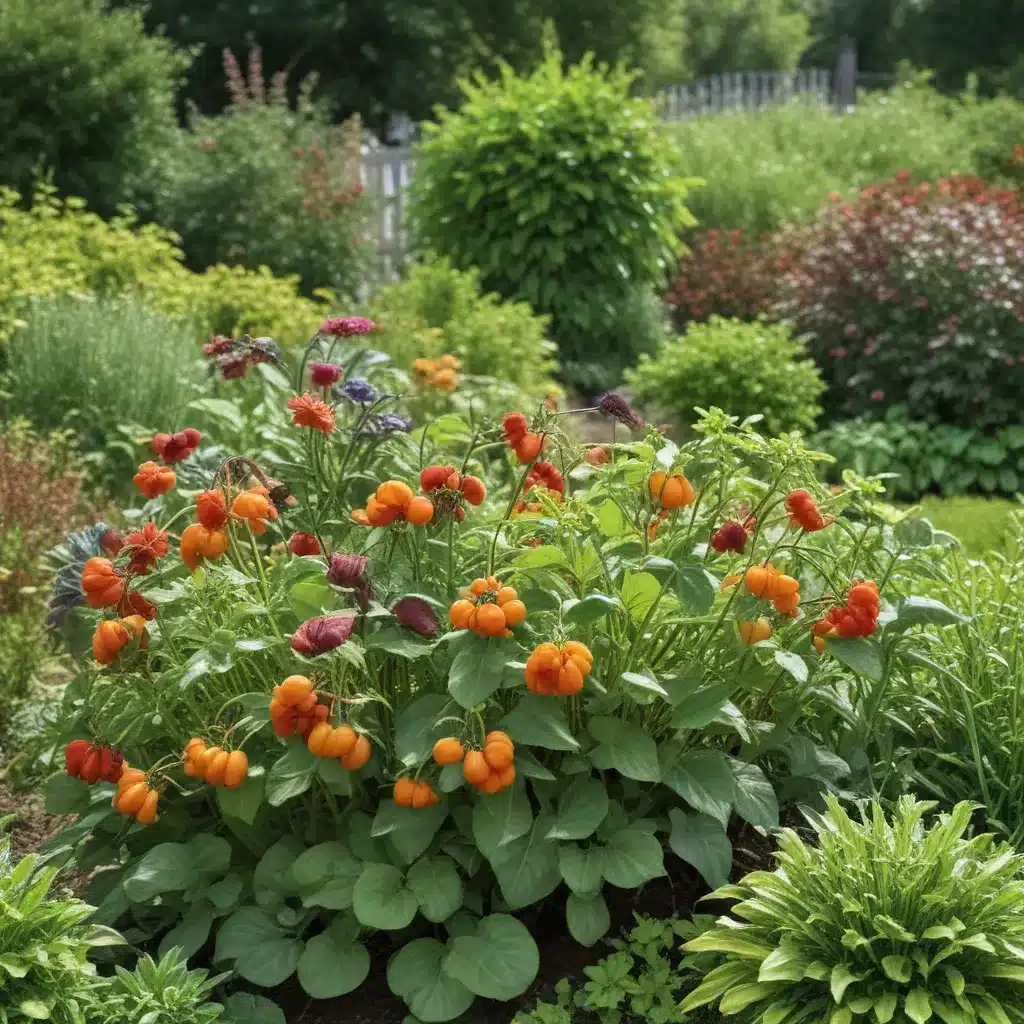
Companion planting is a key strategy in organic gardening that can transform your vegetable beds, herb patches, and flower gardens into vibrant, productive, and low-maintenance oases. By thoughtfully pairing plants based on their unique characteristics and growth habits, you can harness the power of natural symbiosis to boost your harvests, repel pests, and cultivate a thriving ecosystem.
At Crooked Pines Farm, we’ve embraced the art of companion planting to create lush, bountiful gardens that are a joy to tend and behold. Whether you’re a seasoned green thumb or just starting your gardening journey, mastering this technique can open up a world of possibilities for your outdoor spaces.
The Benefits of Companion Planting
Companion planting offers a multitude of advantages that go far beyond just aesthetics. By strategically arranging your plants, you can unlock a cascade of beneficial interactions that support the overall health and vitality of your garden.
Improved Pest Control
One of the primary benefits of companion planting is its ability to deter common garden pests. Certain plants, such as marigolds, nasturtiums, and certain herbs, are known to repel insects like aphids, cabbage worms, and spider mites. By incorporating these “trap crops” around your vegetables and fruits, you can create a natural barrier that protects your plants from damage.
Enhanced Nutrient Cycling
Different plants have varying nutrient requirements and root structures. By pairing complementary species, you can maximize the efficiency of your garden’s nutrient cycling. For example, deep-rooted plants like comfrey can bring up essential minerals from the subsoil, making them available to shallow-rooted vegetables. This symbiotic relationship helps to keep your soil rich and your plants thriving.
Increased Biodiversity
A diverse garden ecosystem is a healthy garden ecosystem. Companion planting encourages the presence of beneficial insects, such as pollinators and predatory bugs, that help to maintain a natural balance. By providing a variety of flowering plants and habitats, you’ll attract a wide range of creatures that contribute to the overall vitality of your garden.
Key Companion Planting Principles
When it comes to mastering the art of companion planting, there are a few key principles to keep in mind. By understanding these foundational concepts, you can design a garden that is not only visually stunning but also highly functional.
Complementary Nutrient Needs
Different plants have varying nutrient requirements, and some are even capable of improving soil fertility for their neighbors. Nitrogen-fixing plants, like legumes, can enrich the soil with this essential nutrient, benefiting nearby heavy feeders. Pairing these types of plants together can create a self-sustaining cycle of nutrient replenishment.
Pest and Disease Suppression
As mentioned earlier, certain plants possess natural pest-repelling or disease-resistant properties. By strategically placing these “trap crops” or “companion plants” around your vulnerable crops, you can create a natural barrier that discourages pests and diseases from taking hold. This reduces the need for chemical interventions, keeping your garden healthy and eco-friendly.
Pollinator Attraction
Pollinators, such as bees, butterflies, and hummingbirds, are essential for the success of many fruits and vegetables. By incorporating nectar-rich flowers and aromatic herbs into your garden design, you can create a pollinator-friendly oasis that will ensure bountiful harvests.
Popular Companion Plant Pairings
Now that you understand the core principles of companion planting, let’s dive into some of the most popular and effective pairings to consider for your Crooked Pines Farm garden.
Tomatoes and Basil
These two culinary favorites have a long-standing history of thriving together. Basil not only enhances the flavor of tomatoes but also acts as a natural pest repellent, helping to deter aphids, whiteflies, and even some fungal diseases.
Carrots and Radishes
Radishes are a great companion for carrots, as their fast-growing nature can help to loosen the soil and deter carrot flies, which are drawn to the scent of carrot foliage. The radishes also act as a “sacrificial crop,” drawing the pests away from your precious carrot roots.
Marigolds and Vegetables
Marigolds are a gardener’s best friend when it comes to companion planting. Their strong, pungent aroma deters a wide range of pests, including nematodes, aphids, and rabbits. Planting marigolds around the perimeter of your vegetable beds or interspersing them throughout your garden can create a natural barrier of protection.
Designing a Companion Planting System
Crafting a successful companion planting system requires a bit of planning and observation, but the rewards are well worth the effort. As you design your Crooked Pines Farm garden, keep these key considerations in mind.
Site Evaluation and Planning
Before you start planting, take the time to assess your garden’s unique microclimate, soil conditions, and existing plant communities. This information will help you determine which companion plants will thrive in your specific environment and how to best arrange them for maximum benefit.
Crop Rotation and Succession
Companion planting is not a one-and-done deal. By incorporating crop rotation and succession planting strategies, you can continuously refresh your garden’s ecosystem, preventing the buildup of pests and diseases and ensuring a steady supply of fresh produce.
Polyculture Planting Techniques
Rather than planting in strict rows or blocks, embrace a more organic, polyculture approach. Mixing and mingling your plants, both vertically and horizontally, can create a visually stunning and functionally diverse garden that mimics natural ecosystems.
As you continue to experiment and observe the interactions in your Crooked Pines Farm garden, you’ll develop a deeper understanding of the art of companion planting. Remember, the key is to work with nature, not against it, and to always keep learning and adapting.
So, grab your gardening gloves, your curiosity, and get ready to embark on a journey of cultivating a thriving, balanced, and bountiful garden at Crooked Pines Farm. Happy planting!


